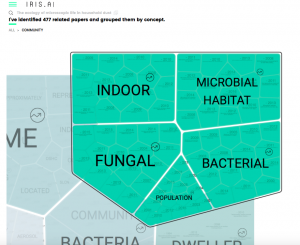Microbes and money Dirty Money: A Matter of Bacterial Survival, Adherence, and Toxicity – Frank Vriesekoop – Microorganisms (OA) In this study we report the underlying reasons to why bacteria are present on banknotes and coins. (…) We treated the various currencies used in this study as microcosms, and the bacterial loading from human hands as …
Microbes in the city Microbial Community Patterns Associated with Automated Teller Machine Keypads in New York City – Holly M. Bik – mSphere (OA). News coverage at EurekAlert, ScienceDaily, and NYMagazine. (…) Here we carried out a baseline study of automated teller machine (ATM) keypads in New York City (NYC). Our goal was to describe …
It’s been a couple of weeks since my last posts due to some work-related trips and changing jobs. Since last week, I am the new Science Editor at uBiome. So here is a longish post to catch up with papers and news articles on microbes of the Built Environment. Microbes and buildings Popular press: ‘Living buildings’ …
In a recent story published in Cell this week, I walk through my own life and career, to deliver the message that humans are changing their own microbial communities as well as those in animals and in the environment, and that health research needs a substantial dose of an evolutionary, ecological and anthropological perspective …
Microbes indoors How do we make indoor environments and healthcare settings healthier? – Jack A. Gilbert – Microbial Biotechnology (OA) It is now well accepted that our modern lifestyle has certain implications for our health (Schaub et al., 2006), mainly as a result of our willingness to remove ourselves from the biological diversity of our …
Microbes indoors Review: Microorganisms in Confined Habitats: Microbial Monitoring and Control of Intensive Care Units, Operating Rooms, Cleanrooms and the International Space Station – Maximilian Mora – Frontiers in Microbiology (OA) Indoor environments, where people spend most of their time, are characterized by a specific microbial community, the indoor microbiome. Most indoor environments are connected to …
Got an email from the developers of IRIS AI the other day: And decided to play around with it. So I went to our Zotero collection on microbiology of the built environment: From there I got a paper and found it’s URL: Meadow, J. F., Altrichter, A. E., Kembel, S. W., Kline, J., Mhuireach, G., Moriyama, M., Northcutt, …
Public fungal sequence data are often not annotated to the degree desirable. This makes it difficult to zoom in on all sequences recovered from some particular country or some specific host. This holds true for the built environment as well – there is no straightforward way to target all fungal sequences generated from, say, bathrooms …
Microbes in subways Bioaerosols in the Barcelona subway system – X. Triadó-Margarit – Indoor Air ($6 to rent, $38 to own) (…) We examined the microbiological composition and abundance in space and time of bioaerosols collected in the Barcelona subway system during a cold period. (…) Multitag 454 pyrosequencing of the 16S rRNA gene was used to …
Interesting short new paper in arXiv: [1609.05763] Integrating citizen science with online learning to ask better questions Vineet Pandey, Scott Klemmer, Amnon Amir, Justine Debelius, Embriette R. Hyde, Tomasz Kosciolek, Rob Knight Abstract: Online learners spend millions of hours per year testing their new skills on assignments with known answers. This paper explores whether framing research questions …


